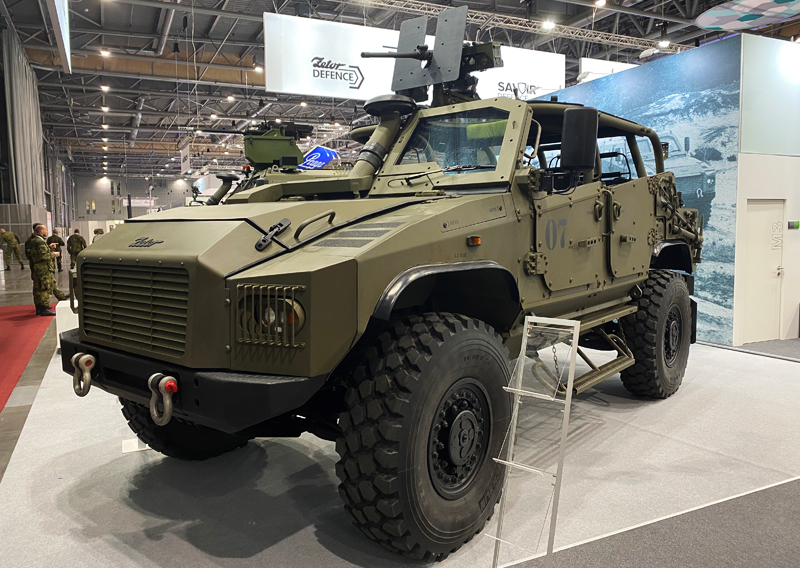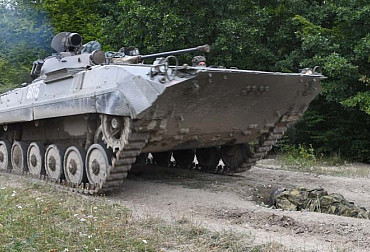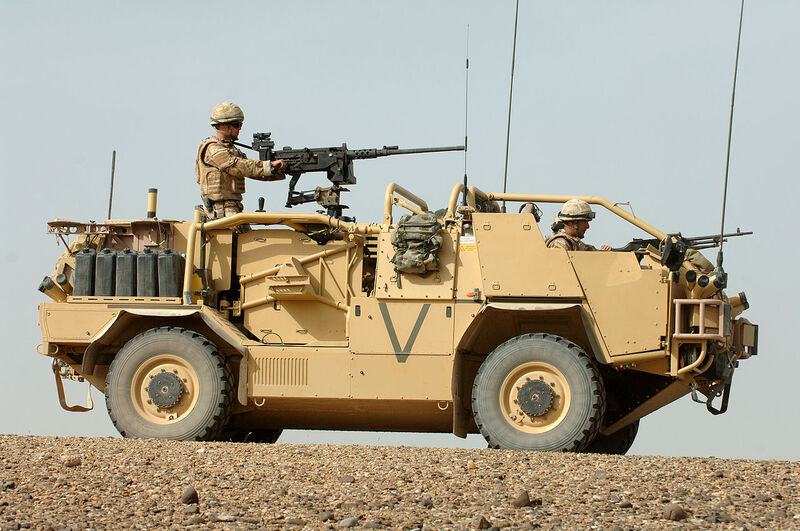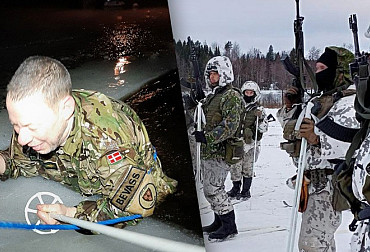Light Assault Vehicles for paratroopers and recon battalion - 14 solutions from 12 suppliers are under consideration
In March 2020, the Market Research and Analysis Department of the Industrial Cooperation Section of the Ministry of Defence announced the preparation of the launch of a market research for the project "Light Assault Vehicle - LAV". During the survey, a total of 20 companies were contacted, 12 of which sent a total of 14 possible solutions (platforms) to the Ministry of Defence. This is an acquisition to replace the current Land Rover Defender 110 Kovboj and 130 Kajman vehicles, and is envisaged to arm primarily the 43rd Airborne Regiment, and later the 102nd Reconnaissance Battalion. It is intended to be a partially armoured assault vehicle weighing up to 9.5 tonnes, transportable by heavy helicopter. The market survey was completed in December 2020.
.jpg)
Picture: In March 2020, the Market Research and Analysis Department of the Industrial Cooperation Section of the Ministry of Defence announced preparations to launch a market survey for the "Light Assault Vehicle - LAV" project. This is an acquisition to replace the current Land Rover Defender 110 Cowboy and 130 Cayman (pictured). | DP
The acquisition of Light Assault Vehicles (LAVs) is foreseen in the Czech Army Construction Concept 2030 in its milestone 2025. The Ministry of Defence intends to purchase LAVs for the airborne regiment worth CZK 5.5 billion. And in the context of a slower rate of growth of the defence budget, it is considering reprioritising and pushing back the acquisition of self-propelled mortars beyond 2028 in favour of the LAVs, to the follow-on Land Forces programme, when LAVs for the 102nd Reconnaissance Battalion should also be purchased at a cost of 1.3 billion, where they will replace the Kajman M1 vehicles.
"The acquisition of about 150 light assault vehicles in several modifications is a project required by the Army Command for equipping the Chrudim Airborne Regiment. According to the current plans, the purchase should be implemented in 2023-26. We expect to compete the supplier, the result should be known next year," Jan Pejšek, director of the MoD's Department of Communications, replied to our inquiry, adding that two dozen companies were approached during the pre-acquisition phase of the market research, of which twelve sent a total of fourteen possible solutions.
 Picture: Oshkosh JLTV | Jan Zilvar / CZ Defence
Picture: Oshkosh JLTV | Jan Zilvar / CZ Defence
There is therefore a wide range of solution options. There has already been information in the press about possible interest from manufacturers in Israel (Plasan SandCat), Switzerland (MOVAG Eagle), the United States (Oshkosh JLTV), Saudi Arabia (Nimr SOV Mk2 Ajban), as well as the Czech Republic in the form of GEPARD vehicles from Toyota Dajbych or a vehicle being developed by Zetor. Visitors to this year's IDET in Brno could get acquainted with many of them and others.
 Picture: Rapid Deployment Assault Vehicle demonstrator built on the Zetor Gerlach 4x4 platform | Jan Zilvar / CZ Defence
Picture: Rapid Deployment Assault Vehicle demonstrator built on the Zetor Gerlach 4x4 platform | Jan Zilvar / CZ Defence
One of the most visible contenders for the delivery of vehicles under the LAV contract is also the British company Supacat, or its Czech partner LPP, which wants to offer the Czech Army a solution in the form of the HMT400 vehicle nicknamed "Jackal" and its six-axle variant HMT600 "Coyote" or "Extenda". The visibility of this bidder is, among others, due to the specific concept of its vehicle.

 Picture: HMT400 4x4, nicknamed "Jackal" by the British Armed Forces | Cpl Ian Houlding / Wikimedia Commons / Public domain
Picture: HMT400 4x4, nicknamed "Jackal" by the British Armed Forces | Cpl Ian Houlding / Wikimedia Commons / Public domain
This vehicle has already been discussed once in the context of the Czech Armed Forces. In 2011, the 601st Special Forces Group expressed interest in three vehicles. In the end, the acquisition did not take place. For one thing, the project was criticised for its cost of nearly CZK 100 million, the purpose of which was to be deployment in Afghanistan, which was expected to be completed. The vehicle was also assessed to have insufficient protection for the troops it carried. Another unsuccessful acquisition project was born out of the Special Forces' request, in which the NIMR from VOP CZ and the PERUN from SVOS competed - in the final neither of these vehicles met the requirements, and the 601st SFG will receive five Enok 4.8/AB vehicles on Mercedes G chassis from the Bavarian company ACS (it was on display at this year's IDET) for approximately CZK 50 million.
 Picture: The 601st SFG will receive five Enok 4.8/AB vehicles on Mercedes G chassis from the Bavarian company ACS (it was on display at this year's IDET) for approximately CZK 50 million | Jan Zilvar / CZ Defence
Picture: The 601st SFG will receive five Enok 4.8/AB vehicles on Mercedes G chassis from the Bavarian company ACS (it was on display at this year's IDET) for approximately CZK 50 million | Jan Zilvar / CZ Defence
However, back to the HMT400, and the other possible variants of the HMT600 ("Coyote 6x6") and "Extenda", where the chassis configuration can be changed from 4x4 to 6x6 as required. The latter variant was also presented in the Mk.2 version at the LPP/Supacat stand at this year's IDET. The ballistic protection of SOV (Special Operation Vehicle) vehicles is of course always lower than that of the closed LAV (Light Armored Vehicle), but interestingly, the HMT400 and 600 propulsion system is located in the centre of the vehicle, which both elevates the position of the gunner, who is thus clearly exposed to enemy fire, and reduces the ballistic protection of the driver and commander when the vehicle is fired from the front hemisphere, when in conventionally designed vehicles the front engine increases their protection. On the other hand, in recent days the vehicle has been put to the test during a live deployment of British forces in Mali - the first time since the UK's involvement in the operation that a convoy of these vehicles has come under enemy fire. The attack was repelled without casualties and only one of the vehicles suffered light damage.
With regard to its concept, the Jackal/Coyote/Extenda resembles an escort rather than a combat vehicle. It combines the characteristics of an all-terrain vehicle and a truck, and at first glance differs from the current Kajman used by paratroopers and reconnaissance troops not only in size. Which, of course, will probably not be a hindrance, not least because we have recently tendered for a passenger off-road vehicle contract and ended up with a truck - the Hilux pickup.
A debatable element is the interesting at first glance possibility of changing the chassis configuration of the Extenda variant. The problem for the driver is that the 4x4 and 6x6 chassis have different driving characteristics, and it is not easy to imagine situations where changing the chassis would be beneficial or necessary in the field conditions of deployment in an Asian or African country. More important than such variability is the compatibility of the technology. The eventual introduction of the HMT vehicle into the arsenal further expands the number of wheeled platforms in the military. And a very specific platform at that. Another issue is the domestic production of vehicles of this type - and domestic production must be a condition of the contract in the case of this technology, in which case the possible production of Supacat vehicles by the state enterprise VOP CZ is envisaged. The number of units for the 43rd Airborne Regiment or the 102nd Battalion will not be staggering, and the possibility of exporting domestically produced vehicles of this type to third countries will be a question. The state enterprise VOP CZ is also the marketing partner of another vehicle that will probably participate in the tender: the very modern looking Saudi Arabian NIMR.
 Picture: NIMR AJBAN 440A vehicle | VOP CZ
Picture: NIMR AJBAN 440A vehicle | VOP CZ
Supacat vehicles are used by the British army, then to a limited extent by the Australians, Norway, Denmark, and the Estonians also have four vehicles in Mali. The vehicles have been deployed since 2008 in Afghanistan, with a total of 1,000 produced.
As mentioned, the market offers a variety of types of Light Assault Vehicles. As a replacement for the Czech Army's Land Rover Defender, the LRPV (Long Range Patrol Vehicle - awarded the IDET Gold Award at IDET 2019) and RDV (Rapid Deployment Vehicle) GEPARD types from Dajbych have long been presented. Both are based on the Toyota Land Cruiser 70 platform, and differ in purpose, weight and level of ballistic protection. In addition to their specific solutions, their advantage lies in the widespread use and proven track record of the original platform worldwide, and the military and militarised variants of the Land Cruiser have an excellent reputation for durability and operational virtually indestructibility.
 Picture: Long Range Patrol Vehicle (LRPV) - The Cheetah is based on the legendary Toyota Land Cruiser 70 series platform | Jan Zilvar / CZ Defence
Picture: Long Range Patrol Vehicle (LRPV) - The Cheetah is based on the legendary Toyota Land Cruiser 70 series platform | Jan Zilvar / CZ Defence
In addition to the Jackal or the Gepard, the American Oshkosh, presented at IDET this year in attractive dynamic demonstrations, is certainly an interesting potential solution. This is the vehicle that succeeded in the US competition to replace the popular Humvee (HMMWV) and, with its significantly higher ballistic and mine resistance and better driving characteristics, will play an equal role in the US armed forces. In addition to the US, the vehicles are already in use in Lithuania, have been ordered by the armed forces of Montenegro and Slovenia, and are planned for the future by Belgium, Brazil and North Macedonia.
It will be very interesting to see under what specific criteria, how and under what conditions the Czech Armed Forces will eventually acquire the Light Assault Vehicle. The Army will certainly be able to make good use of this type of equipment in foreign missions in third world countries. However, the period in which the political representation of the Alliance countries was willing to launch and lead important missions of this nature is probably coming to an end, which the Ministry of Defence should take into account.




















